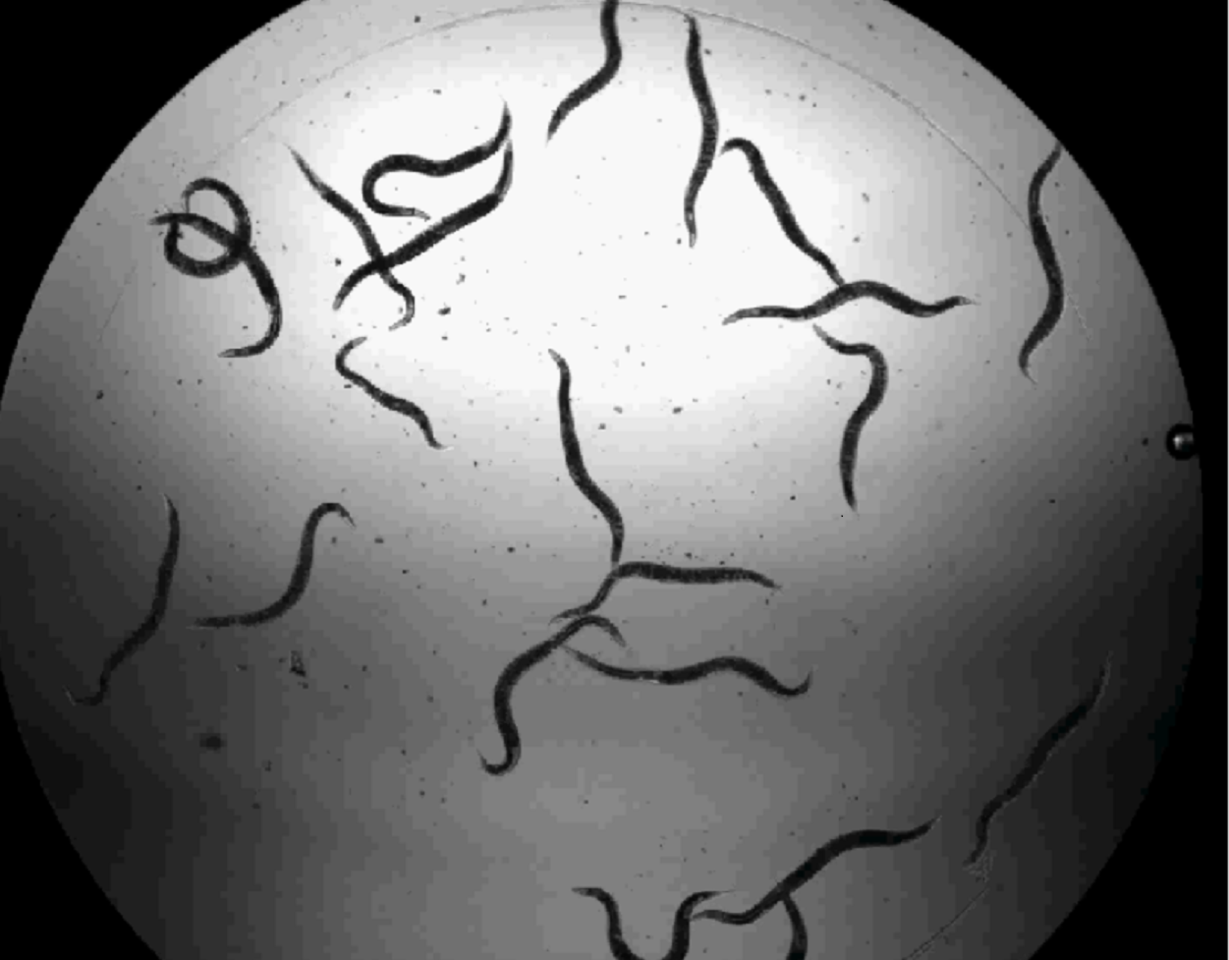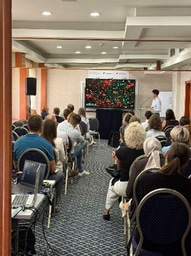Getting funding for unconventional projects: A tale of worms on antipsychotics

Paranoid worms with delusions and hallucinations? While small organisms can model many phenotypes, studying the complex psychiatric nature of a disease like schizophrenia is better left to higher organisms. So how did we end up studying antipsychotics in C. elegans?
Fundamental processes like food intake, that are essential for survival, are robustly conserved between species, even down to nematodes. Antipsychotics used to treat schizophrenia have long been known to cause dramatic weight gain and over-eating in patients, but the underlying mechanisms driving these metabolic side effects remain unknown.
Our project started innocently enough with the development of a simple assay to measure food intake in C. elegans. We started treating worms with drugs that are known to induce metabolic side effects in humans, including over-eating and weight gain. Surprisingly, we made the unexpected discovery that worms also up-regulated their food intake in response to antipsychotics. These results suggested that metabolic side effects of antipsychotics were conserved between worms and mammals. The finding seemed highly relevant, since metabolic side effects are the main reason why patients stop taking antipsychotics. This effect was already observed in the 1950s but remained unexplained. To many it may seem unlikely that anything of significance about antipsychotics could be discovered in a worm such as C. elegans, and even more unlikely to get funding for research on this topic. Indeed, our applications proposing to use C. elegans in the study of antipsychotics were met with thinly veiled irritation reflected in comments such as “a questionable model”, “unlikely to result in any substantial insights”, or “a fishing expedition with an uncertain outcome.”
To settle any doubts, we needed to gain new insights on antipsychotics in C.elegans and to validate them in mice. As our food intake assay was based on 96-well plates, we decided to screen for drugs that specifically suppressed antipsychotic-induced over-eating in C. elegans. Our screen identified two tetracyclic antibiotics, doxycycline and minocycline, both of which specifically suppressed antipsychotic-induced over-eating in C. elegans with little effect on basal feeding. We then tested whether minocycline could abrogate antipsychotic-induced food intake and weight gain in mice. Minocycline also suppressed olanzapine-induced over-eating and weight gain in C57Bl6 mice, and thus validated the effectiveness of our C. elegans-based approach. Importantly, minocycline did not block the therapeutic effect of antipsychotics, showing for the first time that the metabolic side effects of these drugs are clearly separable from the therapeutic effect. In addition, other closely related antibiotics did not block antipsychotic-induced over-eating or weight gain, revealing that these effects were not related to the antibiotic property of minocycline. Our follow up studies on gene expression in the hypothalamus, a key center of feeding in the brain, showed that antipsychotics induced a pro-feeding signature of 43 genes that was suppressed by co-treatment with minocycline. To test whether any of these 43 genes had a functional role in antipsychotic-induced over-eating we went back to C. elegans. We treated mutants of the homologous genes with antipsychotics and asked whether antipsychotics were still able to induce over-eating in the absence of these genes. Two transcription factors, Nr5a2 and Nfyb, turned out to be necessary for antipsychotic-induced over-eating.
Our results clearly established that antipsychotics activated an evolutionarily conserved mechanism to induce over-eating that was present in both worms and mice, and that the therapeutic effect can be separated from the metabolic side effect. However, even these data were not sufficient to convince reviewers in the mental health field about the usefulness of C. elegans. We therefore broadened our application using the C. elegans model to study eating behavior, and focused on the metabolic side effects of approved drugs. The metabolism field was much more excited about this proposal and its relevance for drug discovery, and our funding scores leapt from “not discussed” to a 3rd percentile.
This project required a significant amount of grit and determination to get up and running, especially from some postdocs, but we have high hopes that this unbiased approach will be instrumental in unraveling the mysterious mechanisms underlying antipsychotic-induced food intake, and broader insights into what drives consumption.
Article contributed by Michael Petrascheck from The Scripps Research Institute and Olivia Osborn from the University of California, San Diego.
Reference: Perez-Gomez A, Carretero M, Weber N, Peterka V, To A, Titova V, Solis G, Osborn O, Petrascheck M. (2018) A phenotypic Caenorhabditis elegans screen identifies a selective suppressor of antipsychotic-induced hyperphagia. Nat Commun.10;9(1):5272. DOI: 10.1038/s41467-018-07684-y
Top image from Michael Petrascheck





Join the FEBS Network today
Joining the FEBS Network’s molecular life sciences community enables you to access special content on the site, present your profile, 'follow' contributors, 'comment' on and 'like' content, post your own content, and set up a tailored email digest for updates.